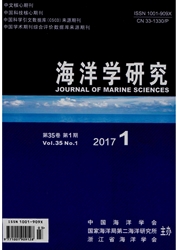
欢迎您!东篱公司
退出

 中文摘要:
中文摘要:
通过对位于南海北部陆架泥质区ZJ2孔进行AMS^14C测试和粒度分析,从中提取出了对沉积环境敏感的粒度组分进行了研究,结果表明:该敏感组分的粒级含量和平均粒径变化主要受东亚冬季风的强弱变化制约。根据该粒度指标,发现近3000a以来东亚冬季风存在8次增强的记录,与格陵兰冰芯的记录有着较好的一致性,且在其他不同区域亦能找到相对应的气候变化证据,揭示了全球气候变化的区域性响应。
 英文摘要:
英文摘要:
Environment Sensitive Grain-Size Component (ESGSC) extracted from grain-size data of core ZJ2 from the mud area, northern shelf of the South China Sea, can be used to indicate the variations of East Asian Winter Monsoon (EAWM), with high (low) content/mean-size of ESGSC denoting the strong (weak) EAWM. Combined with AMS 14C datings, core ZJ2 implies 8 strong EAWM periods over the last 3 000 a, which corresponds well to climatic change records in Greenland ice core and nearby area. The result shows regional impact of the global climatic change.
 同期刊论文项目
同期刊论文项目
 同项目期刊论文
同项目期刊论文
 期刊信息
期刊信息
